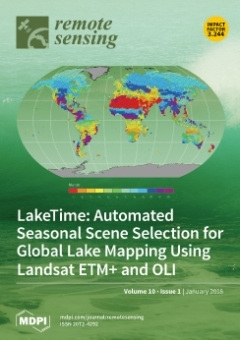It is important to accurately evaluate ecosystem respiration (
RE) in the alpine grasslands of the Tibetan Plateau and the temperate grasslands of the Inner Mongolian Plateau, as it serves as a sensitivity indicator of regional and global carbon cycles. Here, we combined flux measurements taken between 2003 and 2013 from 16 grassland sites across northern China and the corresponding MODIS land surface temperature (
LST), enhanced vegetation index (
EVI), and land surface water index (
LSWI) to build a satellite-based model to estimate
RE at a regional scale. First, the dependencies of both spatial and temporal variations of
RE on these biotic and climatic factors were examined explicitly. We found that plant productivity and moisture, but not temperature, can best explain the spatial pattern of
RE in northern China’s grasslands; while temperature plays a major role in regulating the temporal variability of
RE in the alpine grasslands, and moisture is equally as important as temperature in the temperate grasslands. However, the moisture effect on
RE and the explicit representation of spatial variation process are often lacking in most of the existing satellite-based
RE models. On this basis, we developed a model by comprehensively considering moisture, temperature, and productivity effects on both temporal and spatial processes of
RE, and then, we evaluated the model performance. Our results showed that the model well explained the observed
RE in both the alpine (
R2 = 0.79, RMSE = 0.77 g C m
−2 day
−1) and temperate grasslands (
R2 = 0.75, RMSE = 0.60 g C m
−2 day
−1). The inclusion of the
LSWI as the water-limiting factor substantially improved the model performance in arid and semi-arid ecosystems, and the spatialized basal respiration rate as an indicator for spatial variation largely determined the regional pattern of
RE. Finally, the model accurately reproduced the seasonal and inter-annual variations and spatial variability of
RE, and it avoided overestimating
RE in water-limited regions compared to the popular process-based model. These findings provide a better understanding of the biotic and climatic controls over spatiotemporal patterns of
RE for two typical grasslands and a new alternative up-scaling method for large-scale
RE evaluation in grassland ecosystems.
Full article





